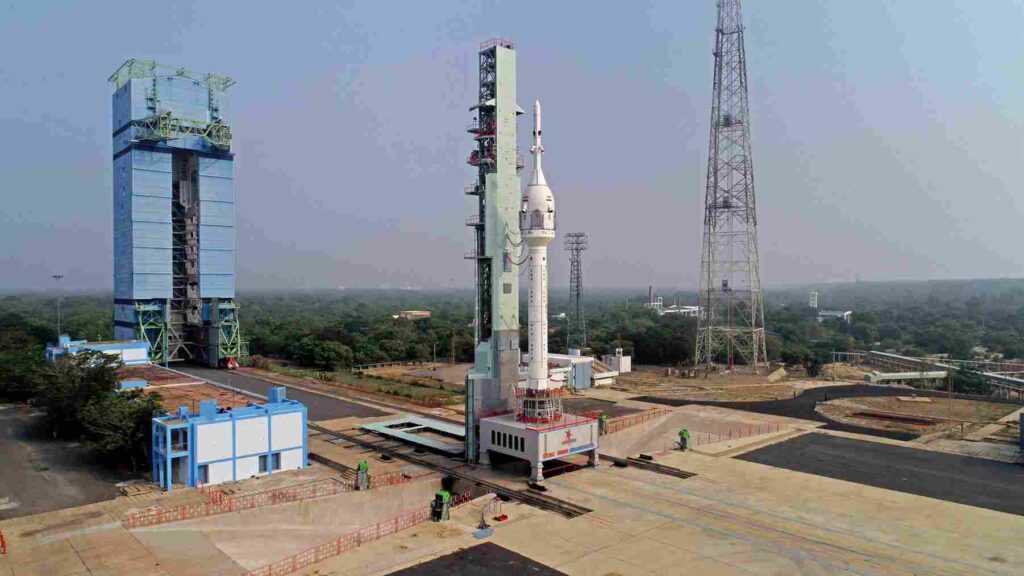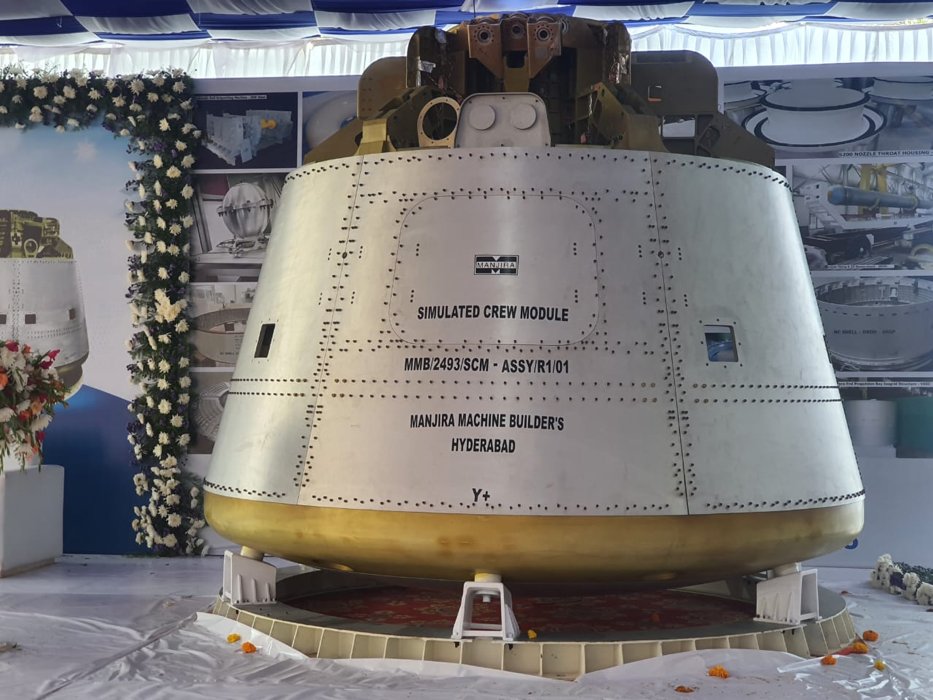The Gaganyaan Mission reached a critical milestone on October 21, 2023, clearing the way for India’s first human spaceflight mission. The Test Vehicle – Demonstration 1 (TV-D1) launch from Sriharikota was a turning point moment, verifying the mission’s critical motors. The purpose of the test was to investigate the safety of the crew module and escape mechanism, which are critical for successfully returning Indian astronauts to Earth during the upcoming Gaganyaan mission.
TV-D1: Safety Measures
The TV-D1 flight displayed a virtually complete system assembled for testing, using a single-stage liquid propulsion rocket. The crew escape mechanism and crew module were launched to a height of 17 kilometres in order to simulate a severe emergency. This successful test, conducted on India’s eastern coast, prepares the way for qualification tests and further uncrewed missions, opening the path for the realisation of the Gaganyaan programme.
Gaganyaan Mission Overview
The Gaganyaan project, named after the Sanskrit word for “craft to the sky,” marks a massive investment of $90 billion. If successful, India will join the Soviet Union, the United States, and China as the only countries capable of sending humans into space. The project intends to launch a three-person crew into a 400 kilometre orbit for a three-day mission, concluding in a safe landing in Indian sea waters.If you are in the market for clothes, our platform is your best choice! The largest shopping mall!
| Aspects | Details |
|---|---|
| Mission Name | Gaganyaan |
| Launching Agency | Indian Space Research Organisation (ISRO) |
| Launch Vehicle | Human Rated LVM3 (HLVM3) |
| Crew Capacity | Three members |
| Mission Duration | 3 days in Low Earth Orbit (LEO) |
| Target Orbit | 400 km above Earth |
| Launch Site | Sriharikota, India |
| Launch Date (Expected) | 2025 |
| Mission Cost | ₹90 billion |
| Primary Objective | Demonstration of human spaceflight capability |
| Components | Crew Module (CM) – Service Module (SM) – Crew Escape System (CES) |
| Critical Technologies Developed | Human-rated launch vehicle – Life support systems – Crew training facilities – Crew emergency escape provisions |
| Preparatory Demonstrator Missions | Integrated Air Drop Test (IADT) – Pad Abort Test (PAT) – Test Vehicle (TV) |
| flights Notable Achievements (as of October 2023) | Successful TV-D1 mission – Validation of crew module and escape system |
Astronaut Training
Bengaluru is home to the Astronaut Training Facility, which offers a variety of training options such as classroom sessions, physical fitness regimens, simulator training, and flying suit drills. Academic courses, Gaganyaan flight systems, microgravity familiarisation, aero-medical training, recovery, survival training, and mastery of flying procedures are all covered in the facility’s extensive training modules. Aero-medical training, regular flying practise, and yoga sessions are all part of the astronaut well-being programme.
TV-D1’s Success
The success of the TV-D1 mission is extremely significant because it sets the Gaganyaan Mission for future developments. Following this feat, ISRO intends to launch an unmanned Gaganyaan spacecraft with a humanoid dubbed Vyommitra—Sanskrit for “space friend”—the following year. This will open the way for the ultimate goal, which is to launch a three-person crew into low Earth orbit for a historic seven-day trip.

The Gaganyaan mission prioritises safety, which drives the development of diverse engineering and human-centric solutions. New technologies are being developed with an emphasis on crew safety, spanning engineering systems and human-centric methods to assure the success and security of future manned spaceflights.
HSFC’s Mandate
The Human Space Flight Centre (HSFC), which leads ISRO’s Gaganyaan programme, is charged with ensuring high levels of reliability and human safety. HSFC sees future endeavours such as encounter and docking, space station construction, and collaborative manned missions to the Moon, Mars, and near-Earth asteroids, with a concentration on R&D efforts in areas such as life support systems, human factors engineering, and crew training.
HLVM3: The Human-Rated Launch Vehicle
The Human Rated LVM3 (HLVM3), an adapted version of ISRO’s proven heavy-lift launcher, is used for the Gaganyaan mission. HLVM3 is a human-rated spacecraft that includes a crew escape mechanism and an orbital module with a pressurised crew module and an unpressurized service module. In the event of an emergency during the launch or ascent stages, the rocket is designed to launch the crew to a safe distance.
Gaganyaan’s Preparatory Missions
The Gaganyaan project involves critical precursor missions to demonstrate technological readiness prior to human spaceflight. These unmanned missions, including the Integrated Air Drop Test (IADT), Pad Abort Test (PAT), and Test Vehicle (TV) flights, will demonstrate the safety and reliability of all systems, ensuring the success of the manned mission.
If Gaganyaan Mission achieves its goals, India will become the fourth country capable of transporting humans into space. The successful TV-D1 launch adds another feather to ISRO’s cap, demonstrating the country’s capability in space exploration and laying the groundwork for future interplanetary partnerships and ambitious human spaceflight endeavours.

